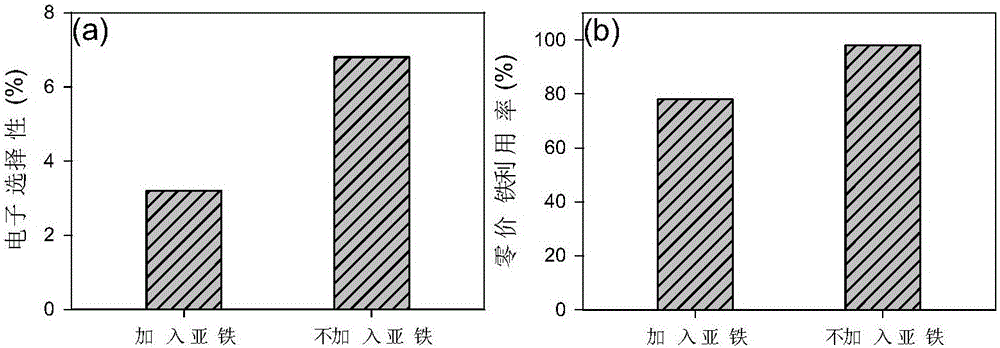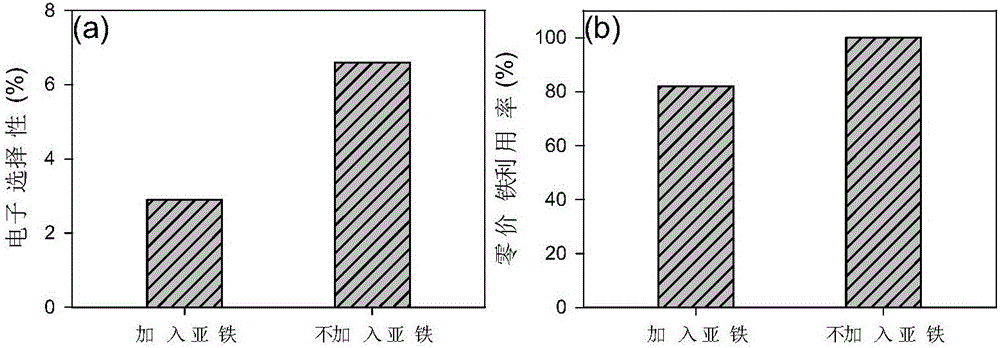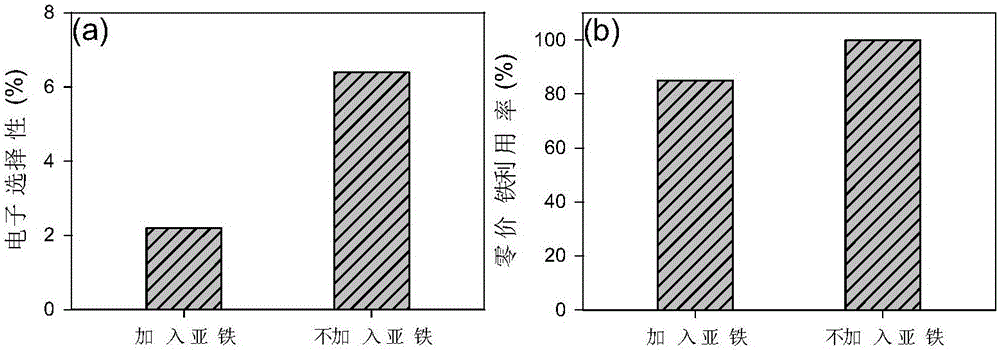Method for improving reduction removal of pollutants with zero-valent iron
A technology of zero-valent iron and pollutants, applied in the field of water treatment, can solve the problems of low effective utilization rate and low electron selectivity, and achieve the effect of reducing waste generation, improving electron selectivity, and being easy for practical application
- Summary
- Abstract
- Description
- Claims
- Application Information
AI Technical Summary
Problems solved by technology
Method used
Image
Examples
Embodiment 1
[0042] This embodiment is carried out in a stirred tank reactor, and the specific steps are as follows:
[0043] Adjust the pH of the industrial wastewater containing 1mM hexavalent selenium to 6.0, add 1mM ferrous chloride, and continuously enter the stirred tank reactor with a wastewater flow rate of 1m 3 / h, the initial concentration of zero-valent iron in the reactor was 1g / L, the stirring speed was 300rpm, and the reactor was exposed to the air. After 10 hours of reaction, all the zero-valent iron was converted into iron oxides. When other conditions remained the same, but ferrous chloride was not added to the water to be treated, after the reaction was carried out for 15 hours, the concentration of hexavalent selenium in the effluent did not change. According to the concentration of hexavalent selenium in the effluent and its reduction, adding ferrous chloride can increase the utilization rate of zero-valent iron from 78% to 98%, and the electron selectivity from 3.2% to...
Embodiment 2
[0045] The difference between this embodiment and the first embodiment is that air is continuously exposed to the water body during the reaction process, and the waste water flow rate is 1m 3 / h, while the aeration flow rate is 0.6m 3 / h, the ratio is 0.6m 3 air / m 3 water, after reacting for 8 hours, the concentration of hexavalent selenium in the effluent no longer changes. According to the concentration of hexavalent selenium in the effluent and its reduction, adding ferrous chloride can increase the utilization rate of zero-valent iron from 82% to 100%, and the electron selectivity from 2.9% to 6.6%. For details, see figure 2 .
Embodiment 3
[0047] The difference between this embodiment and the second embodiment is the amount of air exposed in the reaction process, and the aeration flow rate is 8m 3 / h, the ratio is 8m 3 air / m 3 water, the stirring speed is 400rpm, after 4 hours of reaction, the concentration of hexavalent selenium in the effluent will not change. According to the concentration of hexavalent selenium in the effluent and its reduction, adding ferrous chloride can increase the utilization rate of zero-valent iron from 85% to 100%, and the electron selectivity from 2.2% to 6.4%. For details, see image 3 .
PUM
 Login to View More
Login to View More Abstract
Description
Claims
Application Information
 Login to View More
Login to View More - R&D
- Intellectual Property
- Life Sciences
- Materials
- Tech Scout
- Unparalleled Data Quality
- Higher Quality Content
- 60% Fewer Hallucinations
Browse by: Latest US Patents, China's latest patents, Technical Efficacy Thesaurus, Application Domain, Technology Topic, Popular Technical Reports.
© 2025 PatSnap. All rights reserved.Legal|Privacy policy|Modern Slavery Act Transparency Statement|Sitemap|About US| Contact US: help@patsnap.com



